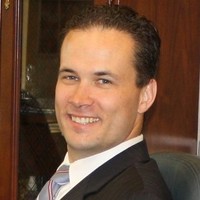A Next-Generation Upgrade for Reliability, Stability, and Scalability
Hewlett Packard Enterprise
Sometimes a company’s existing technology solutions work well, and there’s no reason to change anything. But a technology update can be a big lift for an organization, and being forced into a change can greatly improve circumstances for the better.
That’s exactly what happened to ACA Fashion Software. We were forced to change our storage solution, and we ended up with a modern system that offers exactly what we need today—and for tomorrow.
Services Straddling Two Worlds
I’ve worked at ACA Fashion Software for more than two decades, so I’ve seen how technology has shifted from being a basic requirement to playing an instrumental role in our operations. When I started with the company, our systems were uncomplicated, and the automation involved was simple. It didn’t take much time to master them, which was nice since it was my first job after graduation.
We have a lot of retail customers in the fashion industry. Traditionally, these types of customers have their own hardware, and ACA provided software that the companies could install within their own systems. When the software required updates, our system engineers would go into the field to conduct those upgrades and other regular maintenance.
These activities were steady and predictable for a long time, and although maintenance could be time-consuming, our existing model worked well. This all changed with the rise of the internet and, more recently, the cloud.
End-of-Life Status Pushed Us Forward
Many companies were initially skeptical of cloud-based anything. Over time, however, many of our customers began to envision the benefits of a cloud-based solution where they didn't have to handle any administration of the systems at all. Instead, everything was housed within the cloud solution, which ACA could provide. As we began to have more of these conversations, we started to think about the kind of solutions we should provide our customers. We also began to have talks about our technical requirements for storage. What was the most cost-effective way to provide a solution that's reliable, scalable, high performing, and fits the size of our company?
Our first solution in this space was HPE Matrix, which included HPE 3PAR Storage with a c7000 blade system. HPE handled the technical implementation, and we took care of the design and maintenance in house.
We chose the blade system and the HPE 3PAR storage primarily for reliability and scalability. It was easy to increase CPUs by adding additional blades, and increasing storage only required us to add drives. We were an atypical user of the solution, being HPE’s smallest-ever implementation. But it was perfect for our needs.
By the beginning of 2020, we were running two chassis with more than 20 blades and a much bigger HPE 3PAR system than we had at the beginning. We wanted to scale up even more, but the blade system reached end of life, and we needed to move forward with an alternative.
A Simple Choice and a Seamless Integration
At the top of our priorities was reliability. When we started, we ran the cloud system at our head office. In 2020, we moved that complete system to a data center because we didn't want to have any risks of disconnection in the event of a power failure. This setup was far more reliable, minimizing the risks of unplanned downtime. We needed a new storage solution that was as reliable as the environment it was in.
ACA has a long history with HPE hardware and software, so it was an obvious choice to turn to them for a new storage solution. We have a great relationship with the team and we are confident that their technical propositions are better than their competitors. This is why they offer the most reliable solutions on the market today.
We liked the simplicity and possibilities of the blade system architecture, so we were very quick to decide on the HPE Synergy blade system. It had all the features we liked about our previous blade system, but we could also use more resources per blade, which was a big plus. We also needed a new storage system. For that, we had to choose between HPE Nimble Storage and HPE Primera. HPE Primera has one big advantage which is very important for us—the 100% uptime guarantee.
With help from an HPE engineer, implementation was smooth and straightforward. We rented a new rack in the data center and placed all our new hardware in that rack as a complete new setup. Our old cluster was still running, so we didn’t need to migrate everyone over to the new system right away. Instead, we just set up a new cluster and connected it to the preexisting environment because we wanted all of the technical advantages of the new solution without the complications that can come from mixing environments. Once we set up the new cluster, we were up and running.
Everything was so well prepared and planning was so meticulous that nothing was missed during implementation. We considered the key elements of the system to make the right decisions. With these ideas in place, we could better anticipate how the environment should look, address any problems we might encounter, and ensure that things move forward without any problems.
Our Current Environment
Right now, any customers and our largest customers—who use a lot of resources—run in the new environment. In the next several years, we will phase out the old cluster and move more customers over.
Currently, we are running a Microsoft HyperV platform, and in those hypervisors, we run several diverse systems. We make virtual machines available to our customers, adding more machines for them if required to split the applications because of heavy workloads.
We've got two main product groups: WinStore for the small customers and the XPRT Group for larger customers. For our smaller customers, we created an application called WinStore that runs on SQL server. For larger customers, we offer an add-on to Microsoft Dynamics, which is also run on a SQL server. We also provide reporting services for our larger customers, and these run on separate servers.
Lastly, we have an application that acts as the back office of the POS systems, which is called StoreCenter. Customers can have on-premise POS systems that connect to their StoreCenter backend server. Recently we have added LIV', an online POS System, which also can connect to StoreCenter. This online POS Environment has a cluster setup with a lot of control servers around it. This is because this server has to be running whenever our customers’ retail shops are open. Otherwise, the POS systems don't run. We took all of this into consideration to ensure that our customers had reliable service during and after the implementation.
Encouraging Early Results
It is still early in the process, but we’ve used the NinjaSTARS, a scaling tool from HPE to compare the old environment to our new one. The new storage system has 70% more performance, twice as much memory, can use 112 cores per blade vs 80 cores, and 30–40% faster CPU speeds. Because there’s a single point of entry for management, we have an easier time viewing and managing the environment. User friendliness is critical, and our new system also delivers on this front. It only has a few settings, ensuring simpler deployments and a significantly reduced risk of mistakes and user errors.
Initially, we wanted to upgrade our cloud environment with two blades, but our enclosure made that impossible. HPE Primera and HPE Synergy gave us an easy solution that met the technical requirements of the current setup, and it would be more robust and perform better. This has allowed it to scale with us and grow as customer demand dictates. Centralized management provides us with a robust and easy way of maintaining the platform—much easier and more efficient than sending people into the field. The HPE engineer was also instrumental in ensuring that all of our questions were answered throughout the process. Their expertise made the transition so easy.
HPE Primera and HPE Synergy simplify life for our IT department. It’s easier to maintain and monitor the system, and the new environment is a lot faster with more resources. ACA Fashion Software got everything we needed and wanted from this change: scalability, performance, and reliability. With the next generation of blades and storage, we’ve realized greater flexibility and a more modern system that's easier to manage.







